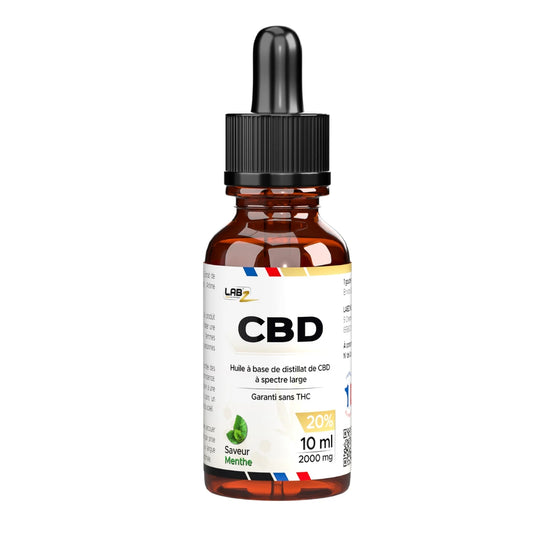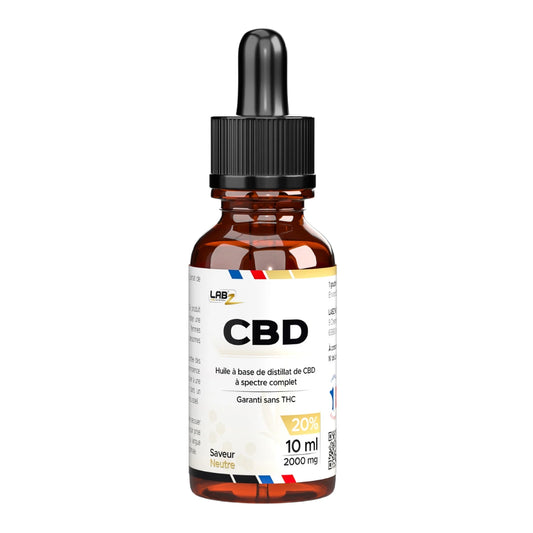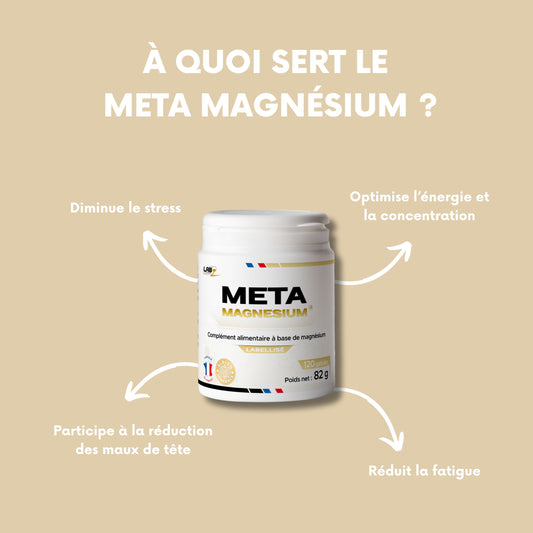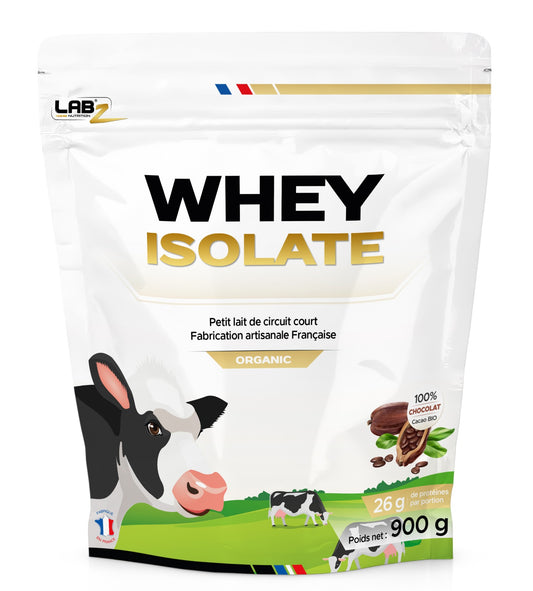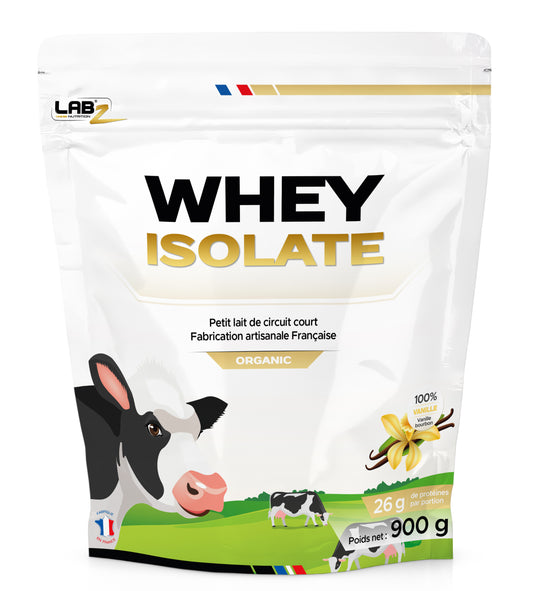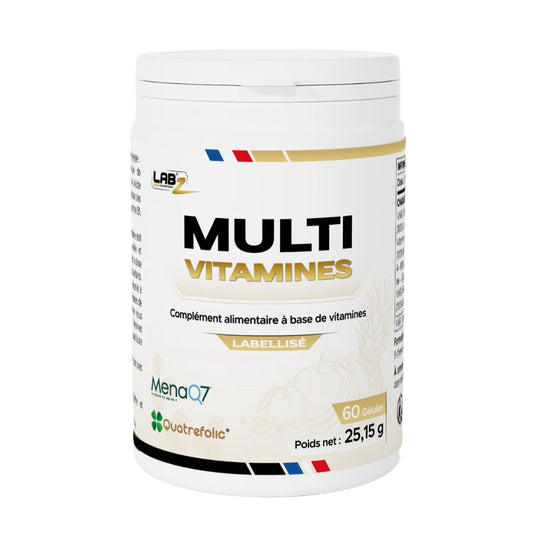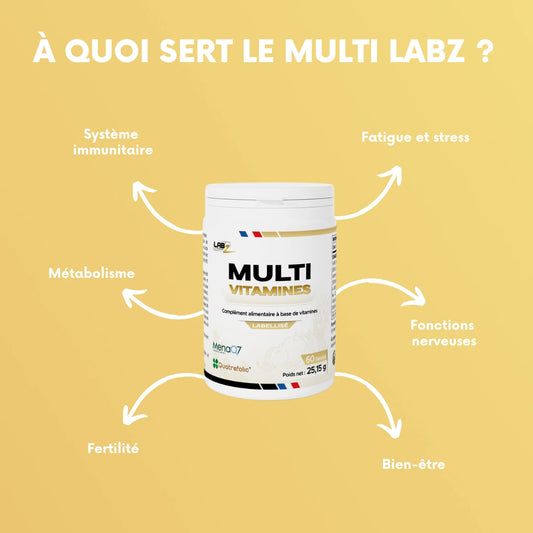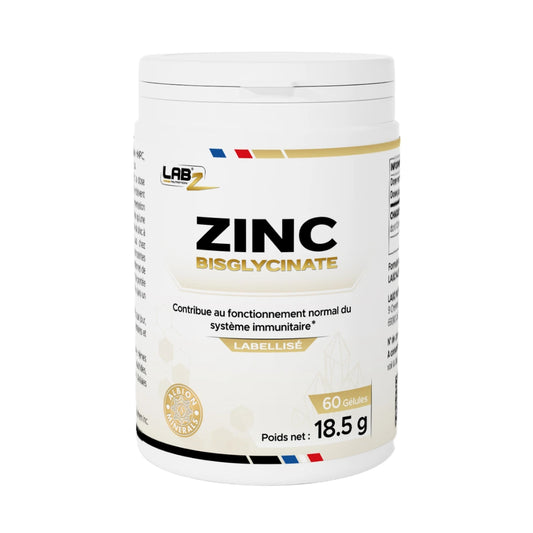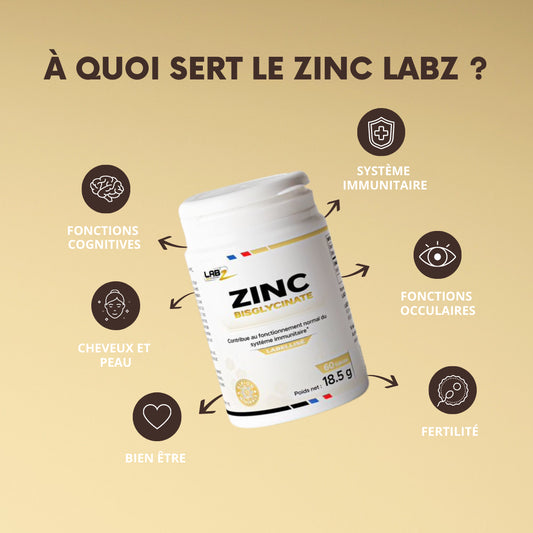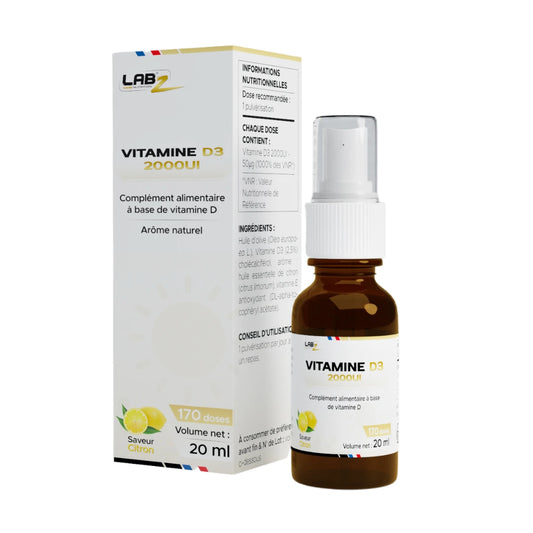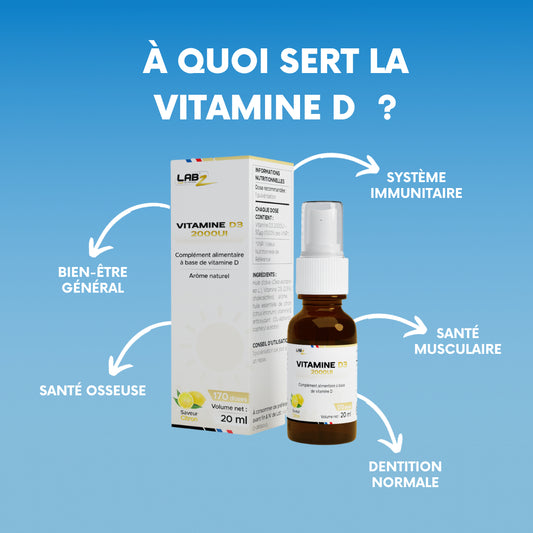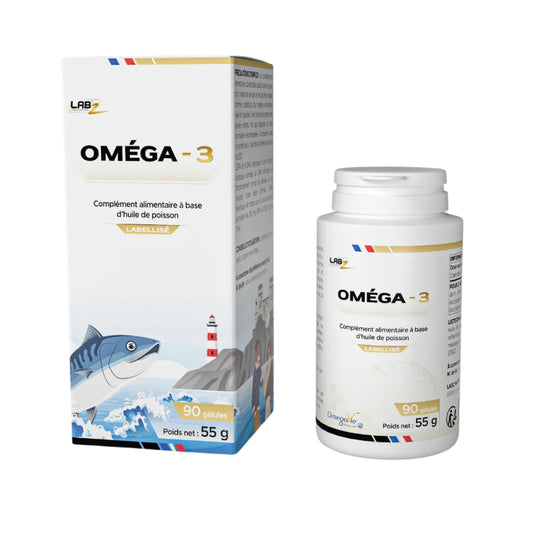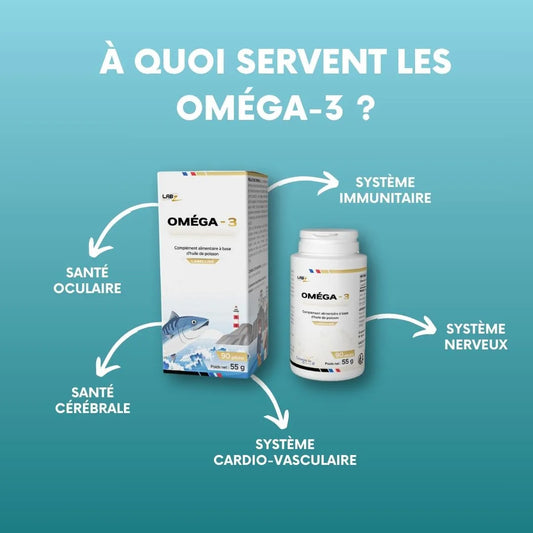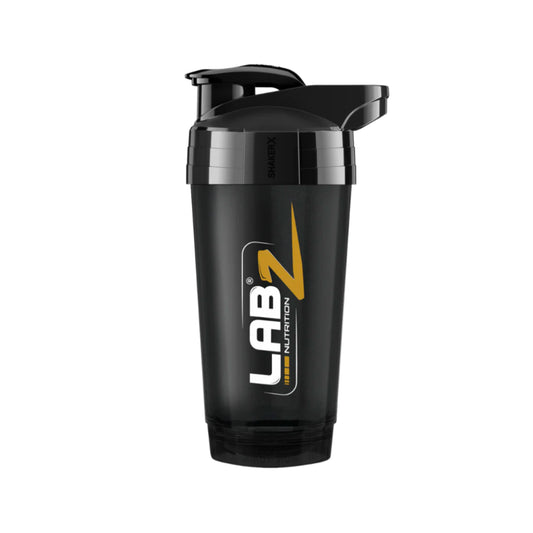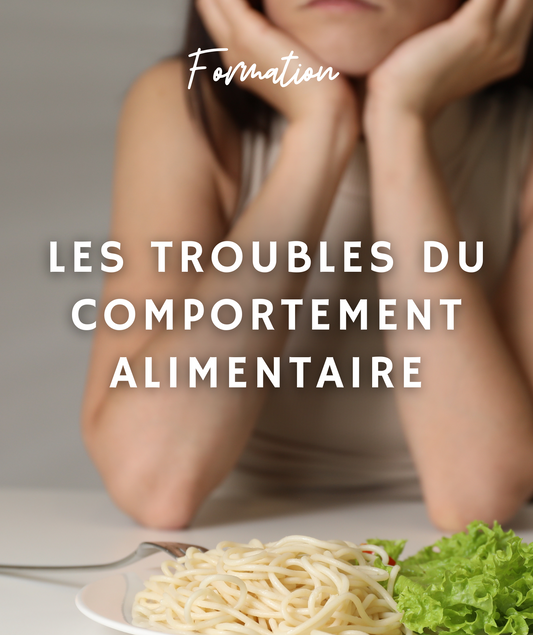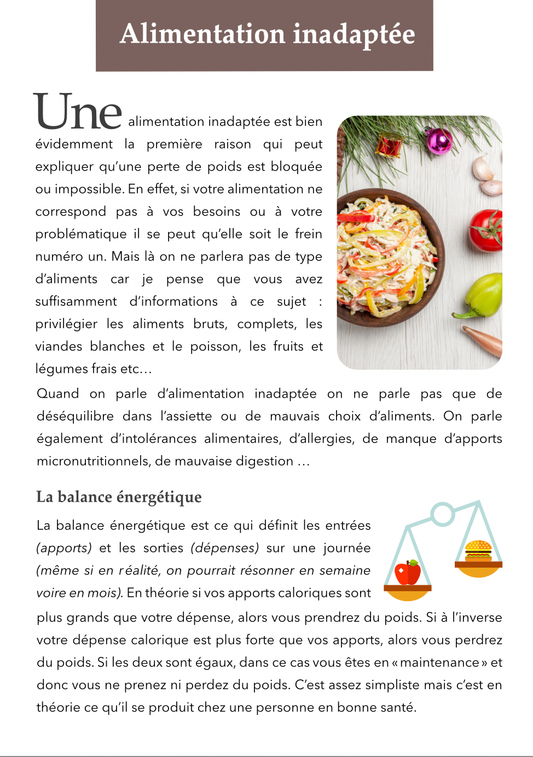All about cbd
All about CBD!
CBD (cannabinol), new green gold of our decade!
Since the United States authorized the production of hemp with a very low THC (tetrahydrocannabinol) content in 2018, CBD has been on the rise! In Europe for example, Germany, Spain, France, Italy, the Netherlands and other countries have adopted regulations around CBD products, but these regulations are national and the tolerance as well that the severity vis-à-vis it is very different from one country to another.
So why does this plant, and what's more, this molecule, CBD, arouse so much desire? Why are the regulations not the same everywhere and why have some countries taken longer than others to authorize its marketing?
***
These are all the questions we will try to answer throughout this article!
What is CBD?
Maybe it's the characteristic shape of the green leaf you just saw on the presentation banner that caught your attention? Or the word "CBD" that we hear more and more especially on American social networks!
In any case, if you clicked and arrived at these words, it is because you have a particular interest or simply want to learn more about this famous molecule which is so much talked about!
CBD , also called cannabidiol , is a component of the cannabis plant (Cannabis sativa) . Like its colleague THC (delta-9-tetrahydrocannabinol), cannabidiol is one of the so-called “ cannabinoid ” molecules.

However, the particularity of CBD is that, unlike THC, it does not have a psychoactive effect and does not give that famous “high” effect. Indeed, CBD actually allows you to benefit from the relaxing properties of cannabis but without the effects of addiction, habituation and above all, “high” of THC. In addition, more and more studies are being carried out to highlight the potential health effects of CBD on the body, such as the reduction of symptoms of anxiety, the improvement of sleep, the prevention of diabetes or the decrease in chronic pain (osteoarthritis and contractures ).
In reality, if THC and CBD are easily confused, it is simply because these two molecules come from the same plant : cannabis! It is this confusing problem that persists and that clouds the good name researchers are trying to give CBD.

However, what must be emphasized is that the hemp plant used for the production of CBD is no longer the same as that used for the production of cannabis ( the narcotic ). Indeed, wild-type hemp is no longer legally allowed and there is actually only a certain domesticated variety of hemp that is allowed for the production of CBD products but also for the use of seeds. and other parts of the plant in various fields such as cosmetology, textiles, food, paper industry etc. This domesticated form actually has a very low THC content (usually less than 0.3%) .
However, hemp is a very old plant, cultivated since Neolithic times by humans for its medicinal properties and as a raw material for textiles. But it was only a few years ago that the use of CBD was legalized in France for production as a pharmacological product (used as an active ingredient in certain drugs) but above all as a food supplement in various forms (oils, creams, infusions, crystals, capsules and e-liquids) .
What do the CBD regulations say?
A little history …

As explained above, hemp is a plant native to Asia that has been used and cultivated by humans for a long time.
It would exist since -11000 years BC. JC according to archaeological studies but would be cultivated since -7500 years BC in particular for the manufacture of clothes.
Although ancient encyclopedias of the Chinese Emperor Shennong already spoke of the therapeutic virtues of cannabis and its psychotic effects in high doses, it was unfortunately when its cannabinoid components were discovered around 1940 that they were considered toxic for humans and have become banned, particularly in the United States. There was also a single convention on narcotics , in 1961 banning cannabis in all UN countries.

From there, the idea of being able to use its two molecules in medicine was discarded.
It was not until the 1960s that cannabinoids began to be studied again. Indeed, it was first the Israeli researcher Raphaël Mechoulam who showed the first beneficial health effects of THC and CBD after having succeeded in isolating them, and his work was therefore the starting point for the reflection of their use in pharmacology. At the same time, we see the appearance of the famous hippie movement which explodes the use of cannabis (the drug) throughout Europe and in all social classes (although it is still illegal).
Following the growing number of arrests and offenses directly or indirectly related to drugs, more and more people began to cultivate their own cannabis plantations (on a small or large scale ) in order to ensure a part the quality of their product, and on the other hand, to get out of outside traffic. We are then in the 90s!
It was in 1996 that things started to move! Indeed, California becomes the first state to legalize the medical use of cannabis ! Many other countries will follow which will “lighten” restrictions on the use of cannabis either for recreational use or for therapeutic use (Canada, United Kingdom, Portugal, Alaska, Washington, Oregon, etc.).
In the end, it was in 2013 that the first country to legalize cannabis (for all uses) was born: Uruguay !
In France, it was in 2015 that the first CBD-based drug was authorized: Sativex (but oddly it is not marketed in France…) ! Today, most countries in Europe have regulations in place regarding CBD products for use as a dietary supplement. But this regulation is not the same for all countries and turns out to be much stricter in some and much lighter in others.
A bit of regulation…
Let's start with the largest: At the global level!
It turns out that many countries allow CBD (Uruguay, Canada, Israel, USA, South Africa…). Nevertheless, the legislation is absolutely not the same according to the countries and even, according to the States in the case of the USA !

In the United States , it was on December 4, 2018 that President Donald Trump legalized at the federal level the production of hemp whose THC concentration did not exceed 0.3%.
In Asia , for example, no country has legislation on CBD, there are actually no official measures taken on this substance. However, some countries in Asia have very strict cannabis laws! It is the same in Africa elsewhere (except for South Africa) .

In Europe now, most countries have embraced CBD by legislating their THC content! However, as at the international level, there is no common legislation for all member countries. Indeed, tolerance with respect to authorized THC levels is not the same depending on the country. In Switzerland , for example, this rate is 1%, while in Italy it is 0.6% and in Germany 0.3% is authorized (although CBD is not mentioned in the law on narcotics as a controlled substance ). In the United Kingdom (even if they are no longer really part of the EU), CBD is sold as a dietary supplement and prescribed under medical prescription for patients with certain pathologies (eg Sativex for multiple sclerosis ) . The same is true for Belgium .

Finally, concerning our dear France …
Although it is the first cannabis-consuming country in Europe, France is the strictest country when it comes to CBD legislation! The French authorities consider that we do not have enough perspective on CBD to say that it is a 100% safe product. French law prohibits cannabis but allows the exception which authorizes the commercial and industrial use of hemp varieties with a THC content of less than 0.2% via the decree of August 22, 1990. CBD is not included in the list of molecules considered as narcotics. It is therefore legal in France. But under certain very strict conditions! Indeed, in France it is authorized to use only the fibers and seeds of the hemp plant to produce CBD-based products (unlike European law which considers other parts of the plant as any agricultural product). ).
Usually it's the English who never do like everyone else, but this time it's the French!
For you to understand, in France, the MILDECA (Interministerial Mission for the Fight against Drugs and Addictive Behaviours) has drawn up 3 conditions for a CBD-based product to be legal:
1) It must be from authorized varieties of hemp (i.e. containing less than 0.2% THC)
2) It must be from fibers or seeds only
3) There must be no THC at all in the final product
It is because of these 3 conditions that many CBD shops have been raided because traders were selling CBD in the form of flowers! However, if we are to believe the Court of Justice of the European Union (CJEU), it is prohibited for a member country to restrict the use of hemp flower because this would contravene the European market.

Here is an extract from the Plouton Judgment which took place in Bordeaux concerning the complaints lodged by traders who were in fact perfectly legal!
The problem of the free movement of goods in Europe:
To explain to you a little why and how, in France it is required that CBD-based products come only from fibers and seeds...
The problem when manufacturers produce their CBD based on extracts that come from the whole plant (we call that a “full spectrum” ) is that the full spectrum necessarily contains traces of THC….
However, the final product must not contain THC at ALL , not to comply with European law which does not prohibit it, but simply because if ever a police check (road saliva test) is carried out and you have consumed CBD from the full spectrum of the plant… you potentially have a risk of being POSITIVE!
It would be unfortunate to lose your driver's license because you consumed CBD...
Normally, on the initiative of LREM deputies, the government is supposed to hold an “Information mission on the uses of cannabis” which will make it possible to define the clear rules concerning CBD in France. Following this mission, France should logically comply with European legislation but will probably not ask for the legalization of recreational cannabis or a relaxation of the law because many deputies, ministers and even the head of state are still against it.
The first conclusions should be given during the second half of 2020... to be continued!
UPDATE 20/11/20: A finding was delivered on Thursday 19 November by the Court of Justice of the European Union (CJEU). In the judgment delivered the CJEU said:
” According to the current state of scientific knowledge, which must be taken into account, unlike THC, another cannabinoid of hemp, the CBD in question does not appear to have any psychotropic or harmful effects. on human health”.
Now that you know that CBD is legal in France, the question is, how to find it and in what form to consume it?
***
In what forms does CBD exist?
In reality, CBD can be found in many forms, but it is important to note that this molecule is very insoluble in water ! On the other hand, when mixed with lipids , its absorption is much better and its effects are potentiated.

CBD oil:
This is the most commercialized form. As said just before, the form complexed with a fatty substance allows the CBD to be correctly assimilated by the body and therefore to have much more beneficial effects than if you consumed pure CBD. Different percentages of CBD are offered, often ranging from 3 to 30%. CBD oil is often presented in the form of drops to be poured under the tongue for rapid absorption in the highly vascularized oral mucous membranes. There is also oil applied to the skin in massage (it's the same oil) . Finally, like the products offered on the site (Hexa3®), the oils can also be presented in the form of a spray to make it easier to take!

In infusion:
CBD can be used as an infusion from the flowers. Unfortunately, as explained in the regulations section, flowers are not really authorized in France, although no law prohibits them. It is advisable to add a source of lipid (coconut oil) for better absorption. Of course, make sure that the plant from which the flowers come is from a variety of hemp containing less than 0.2% THC.

chewing gum:
CBD can also be found in the form of flavored chewing gum that is released slowly in the mouth.

CBD capsules:
CBD capsules are food supplements to be used in the traditional way, that is to say orally. Check that the capsules do contain a source of lipids to improve the absorption of CBD. Note, however, that in this form, CBD is less quickly absorbed since it must first pass through the digestive system before being able to provide its effects.

E-liquids:
In the age of electronic cigarettes, manufacturers of CBD-based products have not failed! Today it is possible to find various aromas and dosages. According to users, vaping CBD would help them quit smoking. It is a form highly valued by consumers and especially by cannabis users who can use it to limit their consumption of narcotics.

CBD crystals:
CBD crystals are the purest form (98% minimum). They are generally used in cooking, in e-liquid, in vaporization or even in dilution in a drink or under the tongue.

Creams:
CBD creams are used for local pain and are often combined with other cosmetic oils. They are mainly used for soothing pain, for cases of eczema or for acne.
***
Where can I find quality CBD products?
It is quite easy today to obtain CBD products. However, like any dietary supplement, quality should be the only factor that guides your choice!
To ensure you get the best CBD products, make sure they meet the following criteria (at least the majority!) :
1) The CBD must be extracted from the only variety of hemp plant authorized in France with a THC content of less than 0.2%,
2) The CBD must be extracted only from the stem and the seeds to avoid any risk of the presence of THC in the final product,
3) The final product must be free of THC,
4) The product must contain a source of lipids in order to be better absorbed by the body,
5) The product is best made from 99% pure CBD crystals,
6) The manufacturer must be able to provide analyzes and certificates proving the total transparency and traceability of their products,
7) The extraction process must be, if possible, as gentle as possible and leave the least residue (the analyzes allow this to be seen) ,
8) The production plant must be able to justify their compliance with hygiene and traceability standards (HACCP standards for example )
Why products must imperatively be free of all traces of THC? (even if European legislation does not prohibit it)
As explained in the regulatory section, some CBD products come from the full spectrum of the plant (including the leaves) which allows you to benefit from the entourage effects of other cannabinoids including THC or CBG. But the problem is that in this case, you no longer respect the French regulations which prohibit the consumption of THC. In other countries of the Union, such as Italy or the Czech Republic, the laws on THC are much more permissive and this therefore allows full spectrum extracts to be sold over the counter and to circulate freely in Europe, until 'in France. Thus, some manufacturers may purchase this raw material to manufacture their CBD products.
The problem is that this can potentially expose the consumer to legal problems, particularly during a saliva test on the road with the risk of a fine and withdrawal of license for the presence of a narcotic substance in the blood (remember you that THC can stay in the blood for up to 2 days!).
It is therefore essential to check the certificates of the products you buy based on CBD!
How does CBD work and what benefits does it offer?
Here we are finally at the part that many of you prefer: the mechanisms and functions in the body!
***
THC and CBD are molecules belonging to the cannabinoid family. Cannabinoids are molecules capable of attaching/binding to cannabinoid receptors in the body. To understand what cannabinoid receptors are, it is essential to understand what the endocannabinoid system is!
What is the endocannabinoid system?
The endocannabinoid system (ES) is a system that plays a major role in the regulation of neuronal communication , in the immune system, reproductive , cardiovascular , gastrointestinal , in the processes of memory , mood , on the system of reward ...
Basically, the SE plays a central regulatory role!
The ES consists of two parts: receptors and ligands .
Receivers:
Receptors (in general) are compounds (proteins in general) which function as ON/OFF buttons (to image). There are absolutely EVERYWHERE in the body and they are the ones that regulate hormonal flows, syntheses, neuronal communications, chemical exchanges, etc.
Going back to ES , ES receptors are called cannabinoid receptors. There are 2 main ones: CB1 and CB2 !
The CB1:
It is the most abundant receptor in the central nervous system. They are present at the pre-synaptic membrane.
(As a reminder: a synapse is an area located between 2 neurons that allows chemical exchanges (neurotransmitters) between these two neurons. They are the ones that allow nerve, neural connections and communication, etc.)
CB1s are mainly present in the brain and they modulate memory, mood, and the various vegetative systems (cardiovascular, reproductive, gastrointestinal). Basically, CB1 has a broad expression profile and is rather involved in the psychotropic effects of cannabinoids!
The CB2:
The CB2 receptor is 44% similar to CB1 and it is mainly located in the immune system . Its main role is to modulate the migration of immune cells (to bring immune cells to the sites of infection) and the release of cytokines both in the immune system and in the central nervous system. CB2 therefore have an expression profile that is much more restricted to immune cells and is rather involved in immunomodulatory effects!
Ligands:
As I explained, receivers can be compared to an ON/OFF button. Ligands are the finger that decides whether to press ON or OFF.
There are several types of ligands (agonist, partial agonist, antagonist, and inverse antagonist) that have different effects on receptors. Without going into details, just remember that agonist ligands will lead to receptor activation (activation of signal transduction) and antagonist ligands will lead to receptor inactivation (reduction or cessation of signal transduction).
Regarding the SE, there are endogenous ligands (synthesized by the body) and exogenous ligands (provided from outside).
The endogenous ligands of the ES are therefore the endocannabinoids . There are 4 of them: anandamide, virodhamine, 2-AG and oleamide. There is no need to go into the details of each of these endocannabinoids. All you need to remember is that these endocannabinoids constantly circulate in your body and ensure the regulation of the various systems mentioned above by activating and deactivating the CB1 and CB2 receptors (and other receptors as well).

This diagram simply represents how the endocannabinoid system works at the synaptic level in the presence of endocannabinoid (EC).
1) Endocannabinoids are synthesized “on demand” in post-synaptic neurons from membrane lipids. They are then released into the synaptic cleft.
2) The ECs will then bind to the CB1 receptors located at the pre-synaptic level. This is called retrograde signaling.
3) Once attached to CB1 receptors, ECs will inhibit neurotransmission both at the level of excitatory synapses (those that circulate glutamate) and at the level of inhibitory synapses (those that circulate GABA).
4) Indeed, the attachment of the ECs to the CB1s will prevent the opening of the calcium channels (those which bring calcium into the synapse) .
5) This blocking of the entry of calcium will prevent the migration of vacuoles filled with neurotransmitters ( either GABA or glutamate depending on which type of synapse one is located in) towards the post-synaptic membrane. There is then no release of neurotransmitters in the synaptic cleft and therefore no neurotransmission is possible.
***
How does CBD work?
Now that you have a better understanding of what SE is and how it works, we can finally talk about how CBD works in the body.
CBD is a natural exogenous cannabinoid (also called phytocannabinoid) just like THC since they come from a plant ( natural ) and from an external supply ( exogenous ). However, as you will have understood, CBD does not offer the same effects as THC!
CBD is devoid of narcotic effects and recent research has highlighted the anxiolytic and antipsychotic properties of this cannabinoid (see last part).
CBD would act as an inverse agonist on CB1 receptors to produce these effects i.e. it changes the receptor to stabilize it and put it in an inactive form . Basically, it induces an overall reduction in signal transduction ( Pertwee, 2008 ). It would also have an action on the inhibition of the reuptake and metabolism of anandamide (endocannabinoid) which would increase its level in the CSF ( Bisogno et al., 2001 ) which has been associated with a reduction in psychotic symptoms ( Leweke et al., 2012 ).
In fact, CBD has little binding affinity for CB1 and CB2 receptors. In fact, CBD is able to modulate other non-cannabinoid receptors. In any case, CBD has two major actions, the mechanisms of which will be described:
1) It delays the “reuptake” of endogenous neurotransmitters (like anandamide)
2) It increases or inhibits binding to certain receptors
Inhibition or increase of receptor binding:
Serotonin receptors:
CBD, in high doses, can directly activate serotonin 5-HT1A receptors (Russo et al., 2005) . These receptors are involved in the biological and neurological processes of anxiety, addiction, appetite, sleep, pain, nausea and vomiting. Depending on the binding ligand, these receptors can produce either an excitatory or an inhibitory response.
On these receptors, CBD is a medium affinity agonist and would increase the expression (the number) of this receptor. This would therefore make it possible to induce a stronger inhibitory response, hence the anxiolytic role. In a behavioral study , CBD intake increased the time rats spent in a maze ( Maze Elevated Plus ). The same kind of behavior has been observed when using anxiolytic substances (medicine against anxiety ).
(For you to understand, maze tests in neurobiology, are tests to identify certain behaviors such as fear, anxiety, curiosity, motivation ... in rats. A rat or a mouse are small animals who are afraid of open areas, with light, without objects to hide in, etc. Thus, an anxious or stressed animal will try to flee into the maze and therefore find the exit, get stuck in a corner and not move more… A “relaxed” rat will take its time to discover the places and will therefore spend more time in the labyrinth) .

Example of an elevated plus-maze used in the neurobiology of animal behavior.
Finally, other studies have also investigated the antiallodynic effects of CBD (allodynia is a sensation of pain felt when the stimulus (which causes the pain) is normally painless). Indeed, according to a study carried out in 2019 , the activation of the serotonergic system via 5-HT1A receptors by CBD would reduce painful diabetic neuropathy (mechanical allodynia) in rats. A second study showed the effects of CBD in reducing neuropathic pain induced by chemotherapy treatments and mediated by the 5-HT1A receptor system.
Dopamine receptors:
CBD has been proposed as a partial agonist of dopamine D2 and D3 receptors. Why partial? Because in reality, CBD does not act directly on dopamine receptors. It would alter dopamine signaling in the brain like antipsychotics do. CBD would therefore make it possible to attenuate the signs and symptoms of schizophrenia at clinical doses.
Adenosine receptors:
This part is a bit complicated to explain. This is why we will focus only on the conclusions issued for the studies carried out on this type of receiver.
A 2006 study showed that CBD has the ability to enhance adenosine signaling through inhibition of uptake and thus provide a non-cannabinoid receptor mechanism by which CBD can decrease inflammation . .
Simply put: adenosine is released by neurons and glial cells. It participates in the inflammatory process. Indeed, the A1 and A3 adenosine receptors activate the migration of immune cells while the A2b receptors inhibit this migration. Thus, the more the level of adenosine increases, the more the inflammation decreases. However, as we have just said, CBD would have the ability to improve the signaling of adenosine and therefore to increase the level of adenosine.
Vanilloid receptors:
Vanilloid receptors are ion channels (which let ions through). TRPV1 are part of this type of receptor. TRPV1 are nociceptors (pain receptor) which are activated by vanilloids such as capsaicin present in peppers and by a thermal stimulus (44°C or 34°C during tissue damage) . When TRPV1 are activated, a cascade of chemical events is triggered causing the propagation of a nerve impulse to the central nervous system where it will be translated and interpreted as a pain response.
CBD has been shown to bind to TRPV1 receptors, modulating pain perception.
Moreover, CBD could also inhibit ionic currents at the membrane level which could explain its potential implication in the treatment of epilepsy and other hyperactivity syndromes. This ability to control membrane excitability could explain the analgesic effects of CBD .
PPARγ receptors:
CBD is able to activate PPARγ (peroxisome proliferator activated receptors, in other words receptors that activate the transcription of target genes).
Activation of PPARγ by CBD could degrade amyloid-beta plaques implicated in the development of Alzheimer's disease. From there, CBD could be a potential treatment to reduce the symptoms of this disease. Indeed, several clinical trials have shown a significant improvement in memory and cognition in patients with AD.
GPR55 receptors:
Like serotonin receptors, GPR55 receptors are so-called “G-protein coupled” receptors. CBD would be an antagonist of this receptor which modulates blood pressure, bone density and other physiological processes. GPR55 receptors are known to promote bone reabsorption and their overactivity is associated with osteoporosis. CBD, by acting as an antagonist, can help reduce bone resorption (bone loss) . Additionally, in a study investigating synthetic CBD, its administration was reported to produce vasodilating effects, reduce blood pressure, and manage some symptoms of Parkinson's disease.
Decreased reuptake of endogenous endocannabinoids
To put it simply, CBD is able to inhibit the activity of FAAH (enzyme capable of hydrolyzing anandamide, an endocannabinoid) which results in an increase in the concentration of endogenous cannabinoids available to bind to their respective receptors (Maione, et al., 2011) , (Massi et al., 2007) .
CBD would therefore have an indirect effect on cannabinoid receptors due to the increase in endocannabinoid levels. This ability would explain some of the effects mediated by CBD while it has only low affinity for the CB1 and CB2 cannabinoid receptors.
***
Conclusion on the health benefits of CBD
As you will have understood, CBD has multiple effects on the body. To sum it all up for you, here is a list of the potential beneficial effects that CBD can bring you.
Pain reduction/anti-inflammatory ( anti-inflammatory, pain s, migraines, fibromyalgia, Crohn's disease)
Reduction of blood pressure (vaso-relaxation)
Reduction of symptoms of stress and anxiety ( relaxing virtues , anti-convulsive , anti-epileptic )
Reduction of insomnia (Monti, 1977) , (Carlini & Cunha, 1981) , (Suraev et al., 2020).
Antipsychotic (bipolarity, schizophrenia , Parkinson's disease , THC symptoms )
Antioxidant ( cardiovascular diseases , neurodegenerative diseases, early ageing, etc.)
Anti-emetic ( nausea, vomiting, gastric discomfort)
Satiety ( CBD can inhibit the urge to eat )
Acne, dermatitis, psoriasis ( regulation of sebum production and inhibition of skin dryness… )
Improvement of diabetes ( type II diabetes ,type I diabetes)
NB: It is important to take into account the variability of sensitivity depending on the person. Some people can be very sensitive to CBD and others not at all. It is essential to test several dosages on yourself before being fixed as to the potential effects of this substance on you.
What future for CBD?
In recent years, a group of researchers belonging to the International Cannabinoid Research Society (ICRS) have made great advances in the use of cannabinoids for therapeutic purposes. A study carried out ( McAllister et al., 2007 and 2011 ) on the role of cannabis cannabinoids in breast cancer showed very promising results. Indeed, CBD would destroy breast cancer cells by downregulating a gene that is involved in several types of cancer aggressiveness. Dr. McAllister said:
"Cannabidiol offers hope for a non-toxic therapy that could treat aggressive forms of cancer without any of the painful side effects of chemotherapy."

Images taken from work by McMiller et al., 2007. Untreated breast cancer cells on the left. Cancer cells treated with CBD on the right. Photo credit: The California Pacific Medical Center.
Nevertheless, according to the researchers, the best results obtained were those combining CBD and THC. Indeed, other studies had already shown the therapeutic benefits of the combination of CBD and THC. Unfortunately this type of association poses problems at the level of the law since THC is prohibited...








 NOS PACKS
NOS PACKS
 Produits
Produits

 Santé
Santé
 Sport
Sport
 Cuisine saine
Cuisine saine
 Les produits Labz
Les produits Labz
